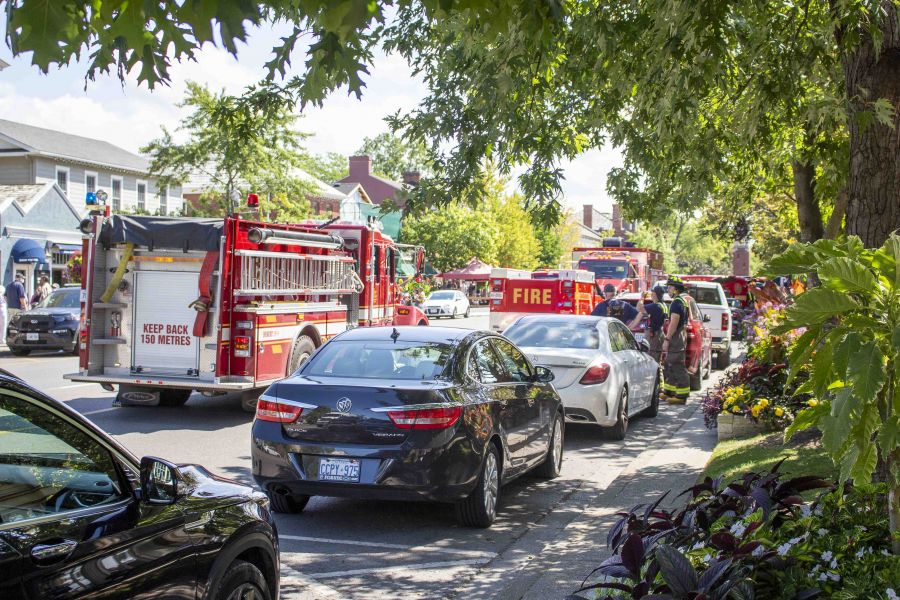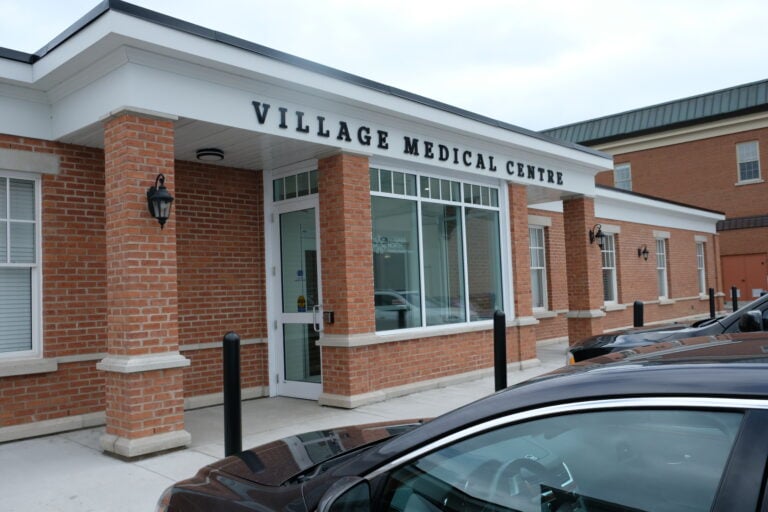Extensive testing by fire department, gas company and town can't find cause of odour on busy Saturday of long weekend
Niagara-on-the-Lake firefighters took over Queen Street in Old Town for much of the day Saturday, investigating reports of suspected natural gas odours.
No source for the problem was found.
The department received about 12 different reports of a natural gas smell in a wide area of downtown, with most complaints coming from the Queen Street area, said Fire Chief Nick Ruller.
He said multiple passersby indicated they also smelled the rotten eggs odour over a wide area from as far as Simcoe Park to Mississagua Street near Johnson Street, about a kilometre away.
Crews were first called at 10:46 a.m. to 67 Queen St. and stayed in the area until about 1:30 p.m., but could not find the source of the smell.
Ruller said firefighters from Old Town, Virgil and St. Davids were on the scene, as well as Enbridge Gas, to monitor the air for natural gas and hydrogen sulfide, as it couldn't be determined what type of gas it might have been.
Hydrogen sulfide gas is extremely explosive and toxic, Ruller said, so crews took extra precautions to ensure the area was safe.
When Ruller arrived, a business owner on the street thought it might have been coming from a building under construction beside Taylor's bakery, but air quality tests showed there was no gas emanating from the building.
At that point Ruller said he crossed the street and smelled something.
“When I was crossing the roadway all of a sudden I caught an odour, which was similar to either sewer gas or natural gas,” he said.
Crews began to exhaustively monitor the air inside businesses and determined there were no signs of gas, so they began to focus on the street.
“It was fairly widespread. We conducted air monitoring at countless buildings along Queen Street. We sent crews to the outlets of some of the storm drains to do air monitoring there to see if there was anything coming out, but we didn't get any readings on any of our detections.”
“We used four gas detectors and they can measure explosive limits and oxygen percentages,” he said.
“What we're finding is that we were getting odours in various areas. However, the interior air monitoring was coming up negative on every building, so at that point we shifted our focus to possible underground infrastructure, either our sanitary sewer or the stormwater sewers.”
He said the widespread area of the reports made it challenging for crews to know where to look.
Staff from the Town of Niagara-on-the-Lake's environmental services department also were called to the scene. They started checking storm sewers and working back to see if they could find anything, but also came up empty-handed.
Enbridge's air readings also were negative for natural gas.
“We were unable to identify what the actual origin was, however, the odours ended up subsiding while we were on scene and we were no longer getting reports of the odours,” Ruller said.
The call was of a “high level of importance,” he said, “given the amount of people on Queen Street and the heritage district and then the widespread reports.”
“We just wanted to ensure that if it was hydrogen sulfide that we were able to identify the source. However, it appears that it was just some kind of unidentifiable odour” that eventually dissipated.
One person reported feeling nauseous, but didn't require medical treatment, he said.
“We can hypothesize what could have occurred but there's a lot of things” that could be blamed, he said.
Wind direction could have played a role. He noted there is a “fairly major Enbridge distribution site on Concession 1, so we were wondering if there perhaps was like a blow-off there or something.”
The region's sanitary system was another consideration, he said.
Based on all air readings coming back negative for gas, crews determined there wasn't a public safety risk and left the investigation to the town's environmental department.
While some people might have seen the large firefighter response as an overreaction, Ruller said the possibility of a hydrogen sulfate leak is not something to take lightly.
He cited an August incident in which buildings were destroyed and several people hospitalized after a hydrogen sulfate explosion in downtown Wheatley, Ont,. near Leamington.
“Our objective in fire is always to be over-prepared and underwhelmed in the event that something occurs,” he said, adding the fire crews were split, with one there in case an incident occurred, and the other trying to identify the source of the smell.
“When it was all said and done, there was no risk to public safety in any way,” he said.
“I know it was right on Queen Street, there's a lot of people around, a busy long weekend, so there was a lot of people kind of wondering what was going on,” Ruller said.
The department “just wanted to make sure that we took every kind of reasonable precaution.”











